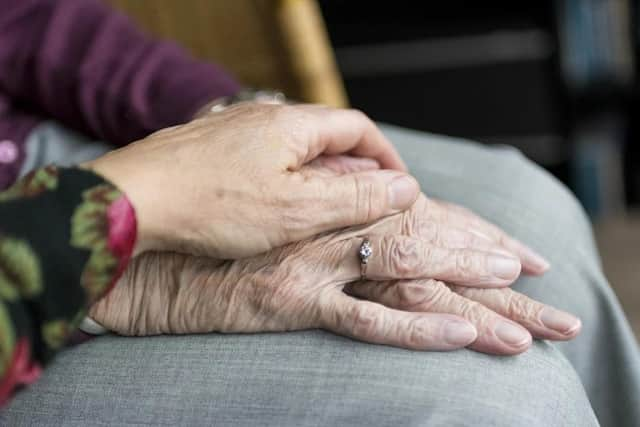Unpaid carers in the North paying a 'poverty penalty'
The region has the highest percentage (10.1 per cent) of people providing voluntary care in the country, while London has the lowest (7.1 per cent).
Analysis by the Office for National Statistics (ONS) found there is a higher percentage of unpaid carers, looking after someone who is elderly or struggling with a long-term health condition, in the most deprived areas.
Advertisement
Hide AdAdvertisement
Hide AdLocal authority areas with the highest levels of unpaid care are mostly in north-west England and the Midlands, while those with the lowest are overwhelmingly in London and the South East.


The Carers Trust said the data “highlights the significant poverty penalty experienced by the nation’s unpaid carers, with far more people caring for friends and family in areas of higher deprivation”.
According to the ONS, an estimated 5 million people in England and Wales provided unpaid care in 2021, that is down from 5.8 million in 2021.
It said the Covid-19 pandemic may have had an impact, as there was a spike in deaths of elderly people, and some carers would have been prevented from having contact with the people they usually look after.
Advertisement
Hide AdAdvertisement
Hide AdAround one in 10 women are carers in England, while 7.6 per cent of men take on this role.
It said women are “significantly more likely” to provide unpaid care than men in every age group up to 75 to 79. But from 80 onwards, men are significantly more likely to be the carers.
Across the country, women between the ages of 55 and 59 and men between 60 and 64 are the most likely to provide unpaid care.
In some areas, around one in five 55 to 59-year-olds are providing unpaid care, with the highest proportion in Mansfield in Nottinghamshire (21.8 per cent), followed by St Helens in Merseyside (20.5 per cent).
Advertisement
Hide AdAdvertisement
Hide AdThe lowest proportions are all in London, starting with Kensington & Chelsea (11.5 per cent), then Newham (12.2 per cent), City of London & Westminster (12.3 per cent) and Southwark (12.4 per cent).
Kirsty McHugh, Chief Executive of the Carers Trust, said: “We believe that the true number of unpaid carers is far higher than the census suggests.
“The fact it took place in the middle of a pandemic when many people were unable to visit those for whom they cared, alongside a change in the wording of the question framing, means that many people may not have identified themselves as unpaid carers.”
Age UK said many older people are having to provide unpaid care for loved ones due to a lack of “good, formal, affordable care”.
Advertisement
Hide AdAdvertisement
Hide AdCaroline Abrahams, Charity Director, said: “Many admit to being exhausted and worried about how long they can continue, and the consequences if they become seriously ill themselves.
“They are all too often being left to shoulder an enormous amount of responsibility and hard work, without any prospect of a real break.
“As public funding for care completely fails to keep up with the increased demand for support from growing numbers of older and disabled people, we worry that very old people are having to fill the gap.”
The census was completed by more than 24m households across England and Wales on March 21, in 2021.
It takes place across the UK every 10 years and provides the most accurate estimate of all the people and households in the country.